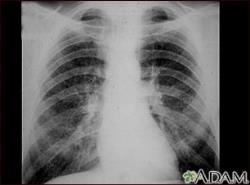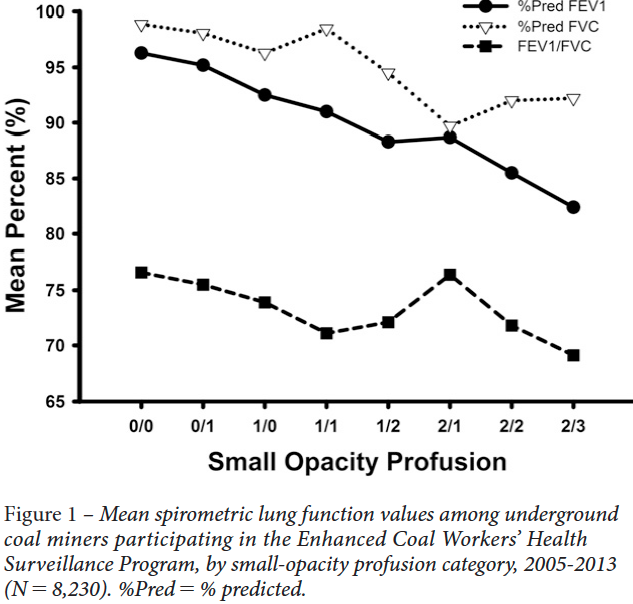Important Medical Study Clearly Finds that Simple Coal Workers’ Pneumoconiosis is Associated with Reduced Lung Function

X-ray Showing Simple CWP, Category 2
Medical researchers have proven a fact largely recognized by black lung benefits practitioners but previously underappreciated by the medical literature: “simple” coal workers’ pneumoconiosis (CWP) is associated with reduced lung function.
Simple CWP is the form of black lung in which the scars on the lungs show up on x-ray as being less than 1 cm wide. (In contrast, the disease is defined as “complicated” CWP, or progressive massive fibrosis (PMF), when the scars measure more than 1 cm.)
As this study shows, the term “simple” is misleading because while it sounds benign, it is actually an irreversible disease associated with lung-function impairment. This study was needed because for much of the 20th Century, the consensus in the medical literature was that CWP in its simple form was not associated with loss of lung function. This view has been perpetuated into the 21st Century through medical textbooks even though studies suggested that the consensus was wrong.
The recent study “Profusion of Opacities in Simple Coal Worker’s Pneumoconiosis Is Associated with Reduced Lung Function” by David J. Blackley, A. Scott Laney, Cara N. Halldin, and Robert A. Cohen proves that simple CWP is in fact associated with pulmonary impairments.
Using a large dataset from NIOSH’s surveillance program consisting of x-rays and spirometry of 8,230 underground coal miners, the researchers found 269 miners with category 1 or 2 simple CWP (category 3 was excluded because less than 10 miners had it and the finding bordered too closely on PMF). As the chart below demonstrates, the data showed that as the profusion of CWP increased, so did loss of lung function even after controlling for smoking status, body mass index, and underground mining tenure. The researchers found that each unit of subcategory increase (e.g., from 1/1 to 1/2) was associated with a 1.5% decrease in FEV1 percent predicted.
The article explained the significance of this finding:
Simple CWP is not an inconsequential condition—we observed progressively lower lung function across the range of increasing small-opacity profusion for each of the three spirometry measures.
Because the study only looked at the 269 miners who had x-rays that were read as positive for simple CWP, the study does not speak to the lung function of miners whose x-rays were read as negative. The study also notes other limitations such as the healthy-worker effect: 95% of study participants were actively working when tested.
In addition to being a valuable epidemiological study, the article is interesting for representing the dialogue between the medical and legal views regarding black lung.
The medical view that simple CWP is not associated with loss of lung function is a classic example of a view that U.S. courts consider hostile to the Black Lung Benefits Act and as a result give little credit in black lung benefits adjudication. See Timothy F. Cogan, Is the Doctor Hostile? Obstructive Impairments and the Hostility Rule in Federal Black Lung Claims, 97 W. Va. L. Rev. 1003, 1010–12 (1995).
The Blackley, et al. study cited a court decision, Griffiths v. British Coal Corp., [1998] EWHC (QB) 2008, to support its view that the 20th Century medical view has “been called into question.”
With this study, the view that simple CWP does not result in loss of lung function can now be considered not only hostile to the law, but also hostile to the medical literature.
The study is available below and was published in the November 2015 issue of Chest, the official journal of the American College of Chest Physicians.
The citation is David J. Blackley, et al, Profusion of Opacities in Simple Coal Worker’s Pneumoconiosis Is Associated with Reduced Lung Function, 148 Chest 1293 (2015).

One Response to “Important Medical Study Clearly Finds that Simple Coal Workers’ Pneumoconiosis is Associated with Reduced Lung Function”
[…] into the resurgence of black lung (for examples of Dr. Blackley’s research, see here, here, here, and […]
Comments are closed.